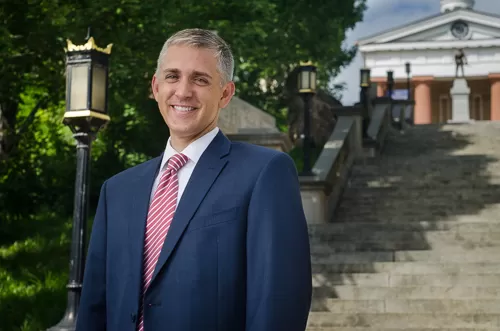Recently I handled a case worthy of a law school exam on insurance. An Amherst County man had been injured in a motor vehicle accident. The injured party tried to handle the case himself and had done an admirable job, as he was able to secure the $25,000 policy limit from the liability carrier.
The best way to analyze this case is to look at how we pursued all of the available insurance. Money under insurance policies is often the most critical piece to a good case. The absence of any insurance, or any assets for that matter, does not make for a successful personal injury case. Here, there were three pots of money: (i) $25,000 limit with the liability carrier, (ii) at least $75,000 available with the UIM carrier, and (iii) $15,000 in medical expense coverage.
The first pot was the defendant driver’s liability policy worth $25,000. Although the client worked out a deal with the liability carrier to secure the policy limits, he unknowingly failed to preserve his rights to pursue UIM. The client signed a standard release but neither the insurance company nor the client followed the procedures required under Code of Virginia § 38.2-2206. Effective January 1, 2016, this statute allows a party to settle with the liability carrier and then subsequently pursue UIM. Before the enactment, a settlement with the liability carrier would preclude recovery against the UIM carrier. Under the new statute, the right to recover against the UIM carrier is preserved if the release with the liability carrier contains certain notices to the underinsured motorist (the same person as the liability carrier’s insured), such as the duty to cooperate with the UIM carrier. Without the proper release and notice, the client would be entitled to no more than $25,000, which would not fully compensate the client. In this case, I had to intervene and ensure that the correct settlement release with notices was executed.
Due to execution of the proper settlement agreement, I was able to pursue the second pot of money, the UIM coverage. Fortunately, the UIM carrier never asked for either release of the liability carrier. A good argument could have been made that once the defective release was signed, no recovery could be had against the UIM carrier despite my attempts to cure. This part of the case was the smoothest as I able to secure a settlement satisfactory to my client.
The third pot, like the first one, presented many challenges. Although treatment and recovery were going well, my client’s own automobile insurance company refused to continue to pay his medical bills related to the accident. My client had medical expense coverage, which pays your medical bills caused by an automobile accident up to the amount of the policy. It is wise to obtain this “no fault” coverage to prevent unpaid medical bills from piling up. He had $5,000 medical expense coverage, which can be stacked based upon the number of vehicles on the policy. The limit was $15,000 because there were three vehicles.
In the middle of treatment, given the increasing amount of the bills, the medical expense carrier sent my client to a doctor paid by the insurance company, which they call an independent medical exam (IME), but is not truly independent. The doctor said that the injuries were due to a pre-existing condition. Based upon the doctor’s exam, the insurance company stopped paying the medical expenses, leaving my client holding the bag.
The medical expense carrier refused to pay the full $15,000 limit despite my client incurring more than $15,000 in medical bills. The insurance company paid a little more than $6,600, leaving $8,400 in unpaid medical bills. Despite my repeated pleas to merely pay the balance, the insurance company stonewalled me. Therefore, I filed a lawsuit in General District Court against the insurance company and alleged bad faith. At the outset of litigation, I subpoenaed the claims file and other records directly from the insurance company to uncover any evidence of bad faith. The insurance company refused to comply with my subpoena, arguing that the documents were privileged. The judge ultimately ruled that the claims file and other records must be turned over, a big victory for my client. To my surprise, the records revealed that the insurance company doctor found that, although there was a pre-existing injury, the car accident aggravated his injuries. This means that the car accident made his pre-existing injuries worse. The smoking gun report was ignored by the claims adjuster, which in my view was evidence of bad faith. Although the court never had the opportunity to rule whether it was bad faith, the amount of the settlement agreement reveals that the insurance company agreed. The insurance company agreed to settle for approximately $11,000, which provided compensation for the balance of the medical expense coverage, interest on the unpaid medical expenses, attorney’s fees and court costs.
This case is an example of the traps that a seasoned attorney or unrepresented party may face when dealing with an insurance company. Remember, the first step is to determine what sources of coverage are available, which will help pave the path to successful personal injury recovery.

